Understanding Eyelid Aging and Rejuvenation Options
Eyelids are among the first areas to show signs of aging due to factors like loss of skin elasticity, collagen depletion, fat redistribution, and environmental exposures. These changes lead to sagging, drooping, wrinkles, puffiness, and dark circles, affecting both appearance and sometimes vision. To address these concerns, a range of surgical and non-surgical eyelid rejuvenation treatments is available. This article offers an in-depth comparative analysis of these methods, outlining their procedures, benefits, risks, recovery, effectiveness, and guidance for choosing the best approach tailored to individual needs.
Causes of Eyelid Aging and the Spectrum of Rejuvenation Techniques
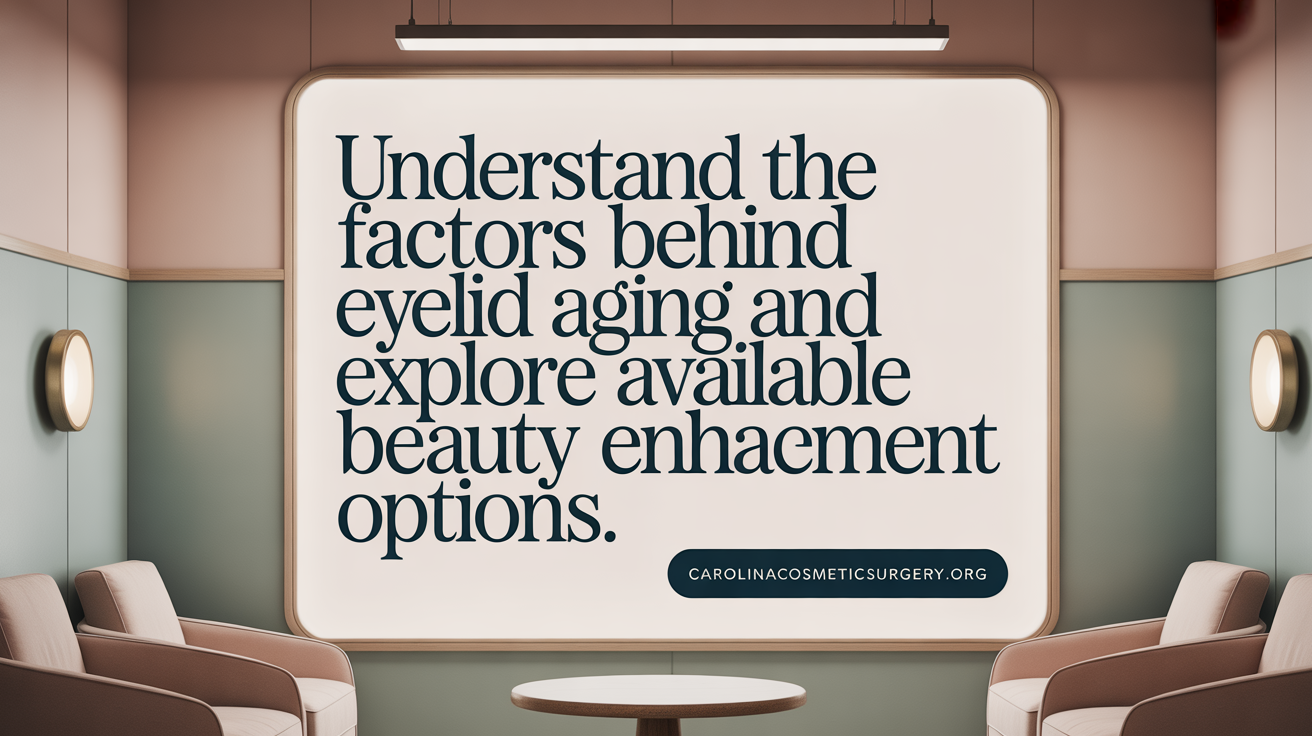
What causes eyelid aging and what are the available rejuvenation options?
Eyelid aging is a natural part of the aging process, influenced by various factors that affect the skin and underlying structures around the eyes. Primarily, it results from the loss of skin elasticity, collagen, and elastin fibers, which are essential for maintaining firm and supple skin. As these proteins diminish over time, the eyelids tend to sag, droop, and develop wrinkles.
In addition to skin changes, fat redistribution plays a significant role. Fat pads that once supported the eyelids shift or diminish, leading to puffiness, under-eye bags, and dark circles. These anatomical changes can impair the aesthetic and functional aspects of the eyelids.
Environmental factors significantly accelerate aging signs. Sun exposure causes photoaging, damaging skin cells and collagen networks. Smoking introduces toxins that impair blood flow and collagen production. Harsh weather conditions, such as wind and cold, further strip moisture and elasticity from skin.
Genetics also influence the rate and pattern of eyelid aging, determining factors like initial skin laxity and fat distribution.
To address these changes, various rejuvenation treatments are available. Surgical options, such as blepharoplasty, involve the removal or repositioning of excess skin and fat, offering a permanent and dramatic transformation. On the non-surgical side, treatments such as Botox relax the muscles that cause drooping, while dermal fillers restore volume lost underneath the eyes and in the eyelid area.
Laser therapy and other minimally invasive techniques like plasma pen and radiofrequency treatments improve skin quality by stimulating collagen production, tightening loose skin, and reducing fine lines. The choice of treatment depends on individual anatomy, severity of aging signs, personal preferences, and desired outcomes.
Consulting with a qualified specialist is crucial to determine the most suitable approach, ensuring results that are natural, functional, and tailored to each patient's needs.
Comparing Surgical and Non-Surgical Eyelid Rejuvenation: Procedures, Benefits, and Suitability
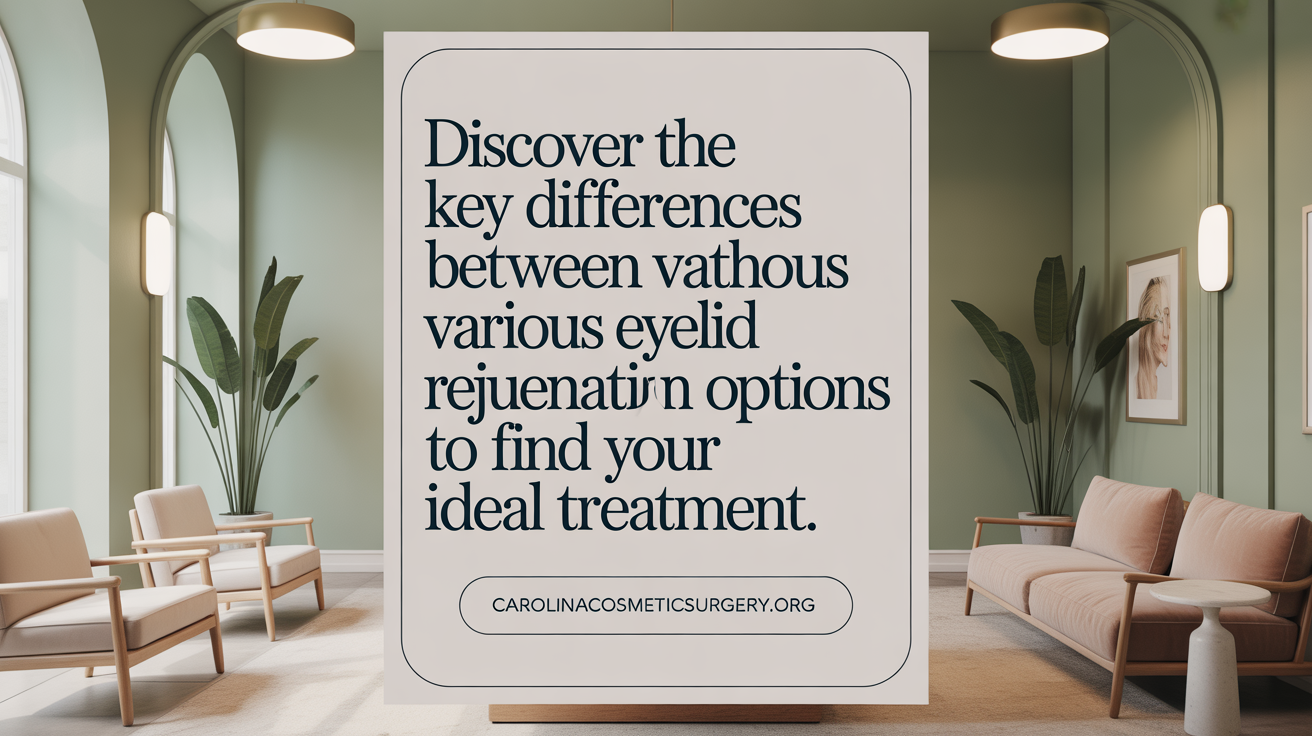
What are the main differences between surgical and non-surgical eyelid rejuvenation methods?
Surgical eyelid rejuvenation, known as blepharoplasty, involves making precise incisions to remove excess skin, fat, and sometimes muscle from the eyelids. This procedure results in a more comprehensive correction of aging signs like drooping eyelids, puffiness, and under-eye bags. It provides long-lasting, often permanent, improvement and can also address functional issues such as impaired vision caused by sagging skin.
The surgery typically takes about one to two hours and is performed under local anesthesia, with some cases requiring sedation or general anesthesia. Recovery lasts about a week or more, during which swelling, bruising, and discomfort are common.
Non-surgical options include treatments like Botox, dermal fillers, laser skin resurfacing, and plasma pen therapy. These methods are minimally invasive, often performed in outpatient settings, and involve little to no downtime. Most non-surgical treatments offer temporary results that usually last from a few months up to two years, requiring repeat sessions to maintain the look.
Botox relaxes the muscles that pull the eyelids down, reducing wrinkles and sometimes lifting the eyelids slightly. Fillers improve volume loss and under-eye hollows, creating a more youthful appearance. Laser and plasma treatments stimulate collagen production, tightening skin and smoothing wrinkles. While these options are excellent for mild to moderate aging signs, they do not significantly alter the underlying anatomy like excess skin or fat deposits.
Overall, surgical procedures provide more significant and durable correction for advanced aging, while non-surgical treatments are better suited for early signs of aging or for maintenance purposes.
What are the benefits, risks, and suitability factors of surgical versus non-surgical eyelid treatments?
Surgical eyelid procedures such as blepharoplasty offer substantial benefits: they can dramatically improve the appearance, correct functional issues, and provide long-term results. These procedures are ideal for individuals with loose, sagging skin, excess fat, or drooping eyelids that block vision. Their main advantages include immediate visible improvements and a natural, youthful look.
However, surgery comes with risks such as infection, scarring, eyelid malpositions, and longer recovery times. It is also more costly, frequently ranging from $4,000 to $7,000 depending on complexity.
Non-surgical treatments generally pose fewer risks and involve minimal discomfort and recovery. They are suitable for those with mild to moderate concerns like fine lines, early skin laxity, and volume loss. These methods are less invasive, involve little to no downtime, and can be performed repeatedly to maintain results.
Limitations include less dramatic improvements and shorter duration of results. They are not appropriate for significant skin excess or muscle laxity but are excellent preventative or supplementary treatments.
Choosing between these options depends on multiple factors: severity of aging signs, overall health, skin condition, aesthetic goals, and budget. Combining surgical and non-surgical methods can also be an effective strategy to achieve personalized results.
Consulting with a qualified specialist is essential to assess individual needs and to develop a safe, effective treatment plan. Whether opting for surgery, non-invasive procedures, or a combination of both, tailored guidance ensures optimal outcomes and satisfaction.
Effectiveness, Recovery, and Results: What to Expect from Each Method
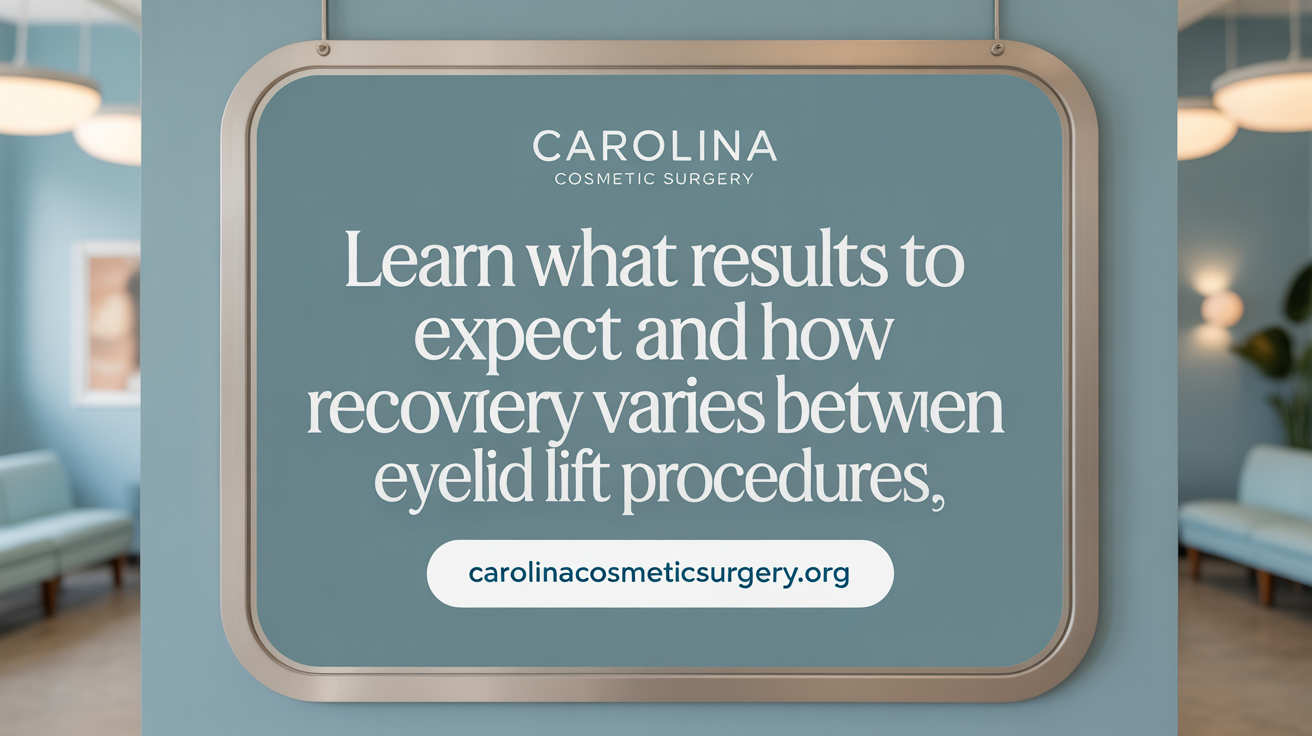
How effective is non-surgical eyelid lift treatment and how long do the results last?
Non-surgical eyelid lift options are effective for improving the appearance of tired or drooping eyelids, especially for mild to moderate aging signs. Treatments such as laser resurfacing, plasma pen therapy, dermal fillers, and PRP injections can produce noticeable lifting, tightening, and smoothing effects.
Laser treatments, including fractional ultrapulse CO2 laser and plasma exeresis, work by stimulating collagen formation and contracting the skin. These treatments can last from 6 months to as long as 5 years, with some cases showing prolonged results due to continued collagen development.
Hyaluronic acid fillers provide immediate volume restoration and wrinkle reduction, with effects lasting about 6 months to a year, depending on individual factors and skincare routines.
Other minimally invasive procedures like PRP, deoxycholic acid, and PDO threads typically yield results that last between 6 to 18 months. Regular maintenance treatments can prolong these benefits.
Overall, non-surgical eyelid rejuvenation can significantly refresh the eye area, with some treatments offering long-lasting effects. However, these results are generally temporary, requiring periodic touch-ups to sustain the improvements.
How do recovery times, procedural differences, and expected results vary between surgical and non-surgical eyelid rejuvenation methods?
Recovery and procedural aspects differ markedly between surgical blepharoplasty and non-surgical treatments. Surgical eyelid lift involves removing excess skin, fat, and muscle, often under local anesthesia or sedation. Patients typically experience swelling, bruising, tightness, and discomfort that may last from one to two weeks.
Patients usually feel ready to resume social activities within about 7-10 days, but full healing and final results may take several months. The procedure offers permanent or long-lasting results and effectively corrects significant sagging, drooping, or bulging in the eyelids.
In contrast, non-surgical options are minimally invasive, performed in outpatient settings, and often do not require anesthesia. Recovery is swift; most patients can return to their routines within a few days.
These treatments produce more subtle, natural-looking results that last from a few months up to a year, depending on the method and skin condition. They are ideal for early-stage aging or for those not ready for surgery.
While surgery provides a powerful solution for severe signs of aging, non-surgical procedures are suited for maintaining or modestly enhancing eyelid appearance. The choice depends on the severity of laxity, patient goals, and tolerance for recovery time.
Comprehensive Overview of Surgical and Non-Surgical Eyelid Procedures
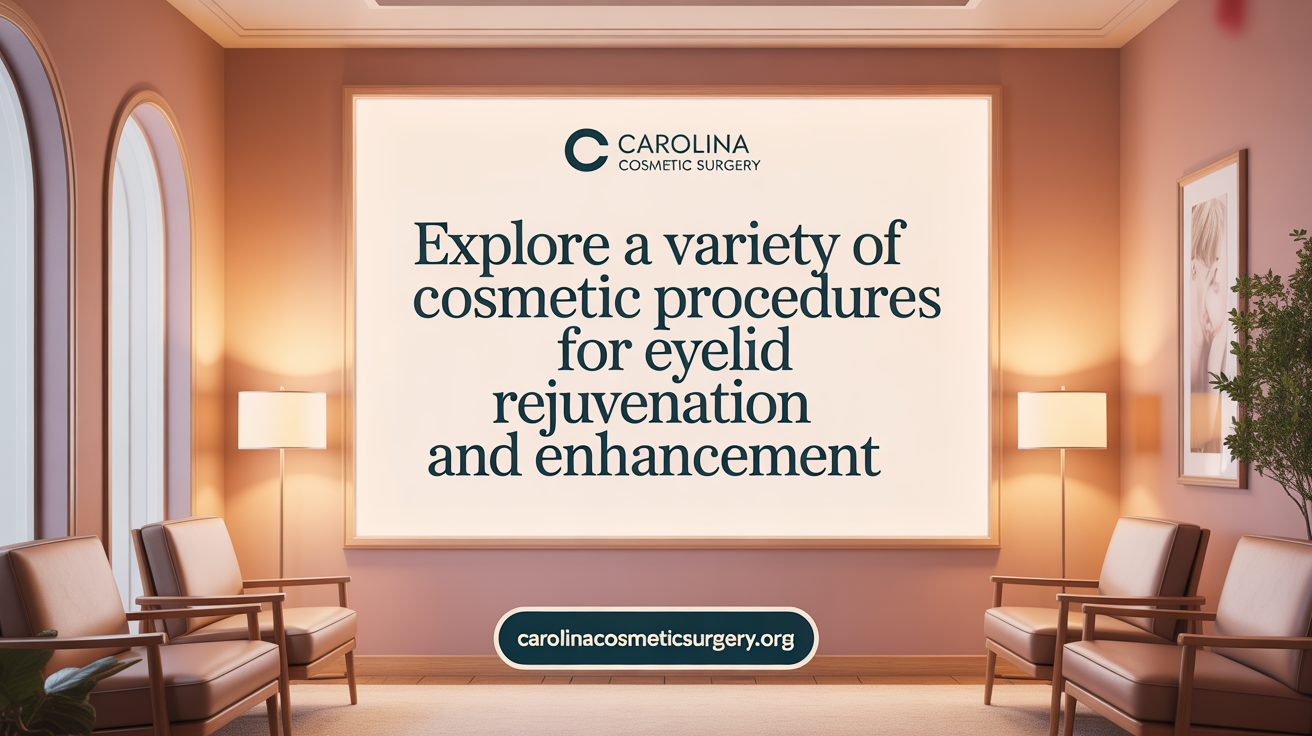
What types of surgical and non-surgical procedures are commonly used for eyelid rejuvenation?
Eyelid rejuvenation offers a range of options tailored to individual needs, combining surgical and non-surgical approaches. The most well-known surgical method is blepharoplasty, which surgically removes excess skin, fat, and sometimes muscle from the upper, lower, or both eyelids. This procedure is effective for correcting significant sagging, puffiness, and drooping eyelids that impair vision, providing long-lasting and dramatic improvements.
On the non-surgical side, treatments are less invasive but still capable of delivering noticeable results. Botox and other neuromodulators relax muscles that create wrinkles and lift the eyelids subtly. Dermal fillers restore volume, reduce hollows under the eyes, and enhance overall contours. Laser skin resurfacing and plasma pen treatments tighten skin, promote collagen growth, and improve fine lines and wrinkles around the eyes.
Innovative minimally invasive options are also gaining popularity. Platelet-rich plasma (PRP) injections stimulate collagen production, helping to tighten and rejuvenate the skin. PDO threads can be used to lift and support sagging eyelids. Chemical peels and topical treatments further improve skin texture and delay signs of aging.
Treatment strategies often involve a combination of procedures to target multiple concerns simultaneously, such as combining blepharoplasty with Botox or fillers to achieve a balanced, youthful look. The ideal approach depends on the severity of aging signs, individual aesthetic goals, skin health, and expert medical advice.
In summary, a variety of surgical and non-surgical procedures are available, each targeting specific eyelid issues like wrinkles, puffiness, volume loss, and sagging. Consulting with a qualified specialist helps determine the most suitable treatment plan, whether standalone or combined, for optimal and natural-looking results.
Guiding Patients to the Best Eyelid Rejuvenation Choice for Their Needs
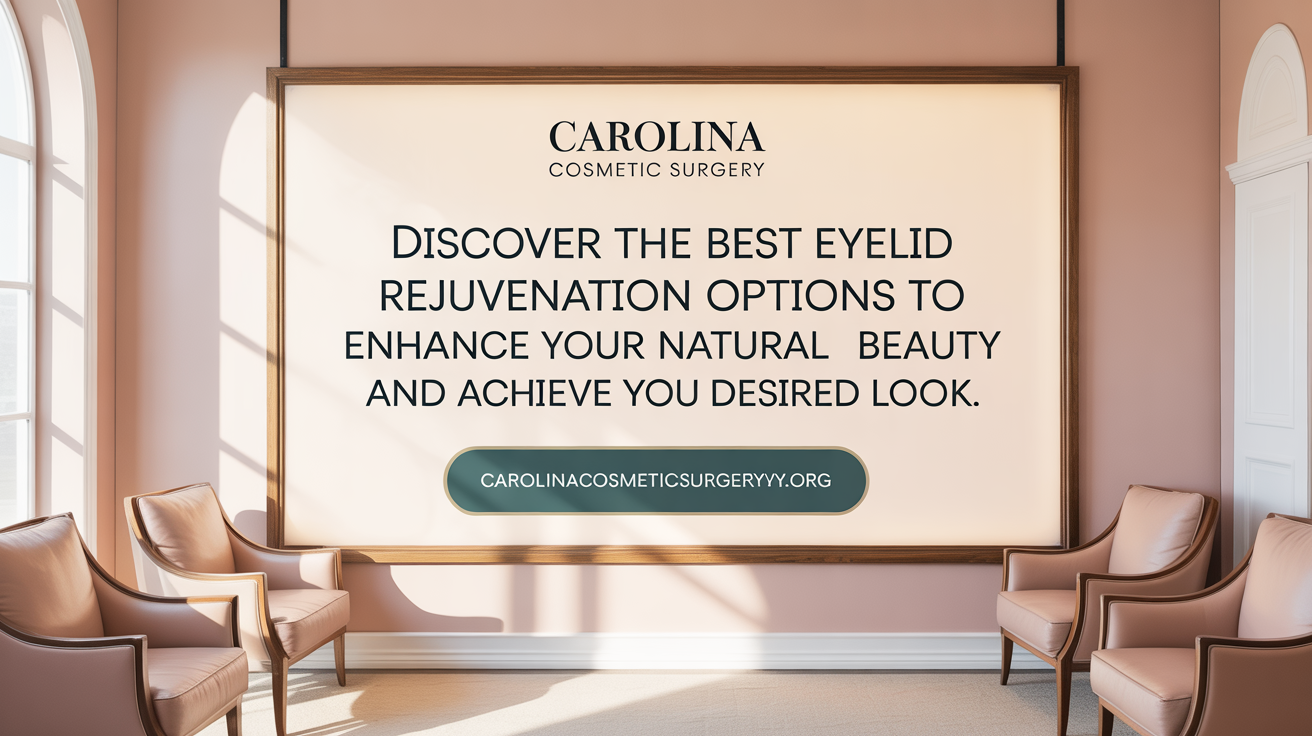 When considering eyelid rejuvenation, patients must evaluate various factors to determine the most appropriate treatment. The severity of aging signs—such as excess skin, drooping, or puffiness—plays a crucial role. For extensive sagging or excess tissue, surgical options like blepharoplasty are often preferred due to their ability to provide dramatic, long-lasting results.
When considering eyelid rejuvenation, patients must evaluate various factors to determine the most appropriate treatment. The severity of aging signs—such as excess skin, drooping, or puffiness—plays a crucial role. For extensive sagging or excess tissue, surgical options like blepharoplasty are often preferred due to their ability to provide dramatic, long-lasting results.
Non-surgical treatments, including Botox, dermal fillers, and laser resurfacing, are suitable for those with mild to moderate signs of aging such as fine lines, slight skin laxity, or volume loss. These options tend to involve minimal downtime and are less invasive, making them attractive for individuals who seek subtle improvements with quick recovery.
A thorough consultation with a qualified specialist is essential. They assess individual factors like skin type, eyelid structure, overall health, and personal goals. This personalized assessment ensures that the chosen approach aligns with the patient's needs and expectations.
Sometimes, combining surgical and non-surgical procedures can optimize results. For instance, a patient may undergo blepharoplasty to remove excess tissue and receive Botox or fillers to enhance contour and reduce wrinkles, achieving a more comprehensive rejuvenation.
Balancing recovery time, risks, and desired outcomes is critical. Surgical procedures generally provide more permanent results but involve longer recovery and higher risks. Non-surgical options offer a quicker, less risky alternative, ideal for maintenance or early signs of aging.
Ultimately, selecting the best treatment stems from detailed dialogue with a specialist, considering individual concerns, lifestyle, and budget. An individualized plan ensures effective rejuvenation that best suits the patient's unique anatomy and aesthetic goals.
For more guidance, searching for "choosing eyelid rejuvenation treatment" can provide valuable resources and expert advice to support informed decision-making.
Making the Right Choice for Youthful, Refreshed Eyes
Eyelid rejuvenation offers a variety of approaches tailored to different aging concerns, ranging from transformative surgical blepharoplasty to subtle, minimally invasive non-surgical treatments. Understanding the causes of eyelid aging and the pros and cons of each method empowers patients to make informed decisions that balance effectiveness, recovery, and personal goals. Consultation with qualified specialists is crucial to devise personalized treatment plans that may combine both surgical and non-surgical techniques, optimizing results for a naturally refreshed and functional eye area. Whether seeking dramatic change or gentle enhancement, the right approach can restore youthful vitality and boost confidence.
References
- Surgical or Non-Surgical Eyelid Rejuvenation: Which is Right For Me?
- Unveiling Your Refreshed Eyelids: Upper Blepharoplasty vs. Non ...
- Surgical vs. Non-surgical Eyelid Rejuvenation - Perk Plastic Surgery
- Surgical vs. Non-Surgical Eyelid Rejuvenation in Beverly Hills
- Enhance Your Eyelids Without Surgery with Non-Invasive Options
- Blepharoplasty vs. Non-Surgical Eye Rejuvenation
- Modern blepharoplasty: From bench to bedside - PMC
- Does A Non Surgical Eyelid Lift Work? (Before and After Photos)
- Surgical vs. Non-Surgical Eyelid Options - Athena Plastic Surgery
- Eyelid Lift | Johns Hopkins Medicine
